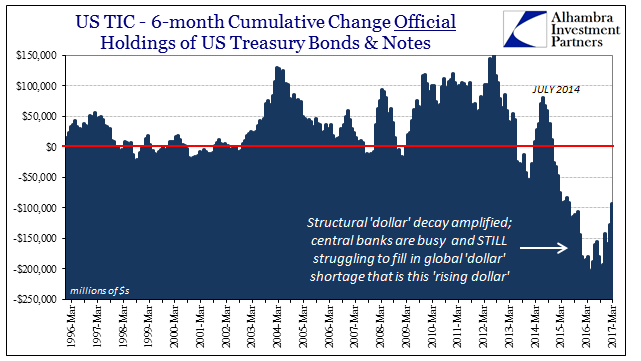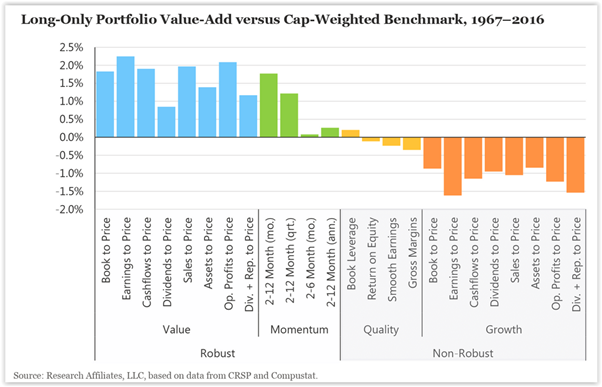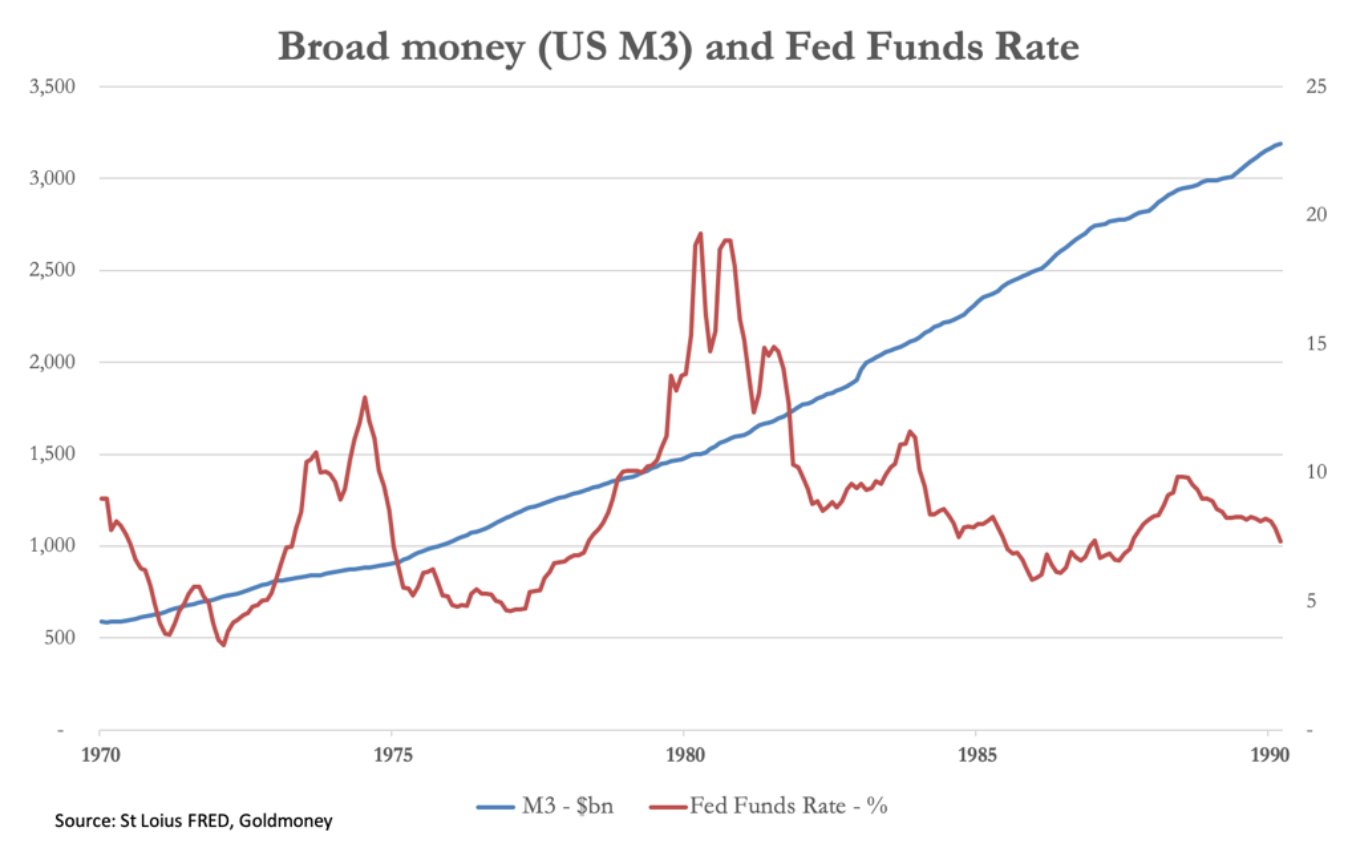Under President Obama the debt of the United States government has grown by about 50%, and now stands at close to $16 trillion. Every year, the US government spends between $1.2 and $1.5 trillion more than it takes in. Every day that financial markets are open the US government has to borrow an additional $4 billion.
The pathetic fiscal cliff ‘compromise’ of last week has proved the most cynical students of the political elite correct in that there is not a snowball’s chance in hell that Washington will ever get this under control.
Can this go on forever? No, it cannot — although adherents of the Church of Modern Monetary Theory now proclaim that its holiness, the State, is not restricted by earthly matters, and that no limits apply to it. “It simply prints the money!” Back on earth, however, such recklessness has consequences, and these consequences will ultimately put a very nasty end to proceedings. But politics will not fix this. This much is certain.
Political theatre
One of the annoying little things that stand in the way of more debt is the dreaded debt ceiling debate, a quaint congressional tradition according to which the politicians in Washington have to periodically pretend that they can indeed exercise self-constraint and that they would even obey self-imposed limits. After the usual self-serving theatrics, both parties agree that the debt ceiling should be lifted, that spending must continue, and that more debt should be accumulated – in the interest of the American people, the US and the global economy, social peace, and because the show must go on.
Since March 1962, the debt ceiling has been raised 74 times.
Enter The Coin!
In order to make this farce a tad easier next time, the following plan has been concocted. It has recently made the headlines. You can read about it here and here:
The U.S. treasury is to issue a platinum coin with a notional value (that is, a value that is fixed entirely arbitrarily by the government) of $1 trillion, and this coin is deposited with the Federal Reserve. In fact, the coin is used to pay down $1 trillion of US government bonds held presently by the Fed (The Fed holds more than $2 trillion in government bonds). Thus, tradable government debt that counts against the debt ceiling is swapped for a ‘commemorative’ coin that does not count against the debt ceiling. $1 trillion of government debt thus magically disappears.
The US government has its fans who believe that anything, legally or illegally, should be done to keep it living beyond its means for as long as possible. These fans are supporting the plan. Among them is, not surprisingly, Paul Krugman, who fears nothing more than a congressionally enforced coitus interruptus before the protracted orgy of money-printing and deficit-spending has a chance to climax – as he keeps promising us – in a wonderful return of self-sustaining growth.
But the plan has many critics. Their criticism strikes me, however, as rather naïve and faint, and also missing the true significance of it all.
Weak criticism
The critics make the following points:
1) This is just a trick and may not be legal.
2) It eases the pressure on politics to reduce the deficit meaningfully.
3) This could lead us onto the dangerous road toward debt monetization and could be inflationary.
Let me address each of these points before I come to what I consider the most important aspect of this.
Ad 1): Oh pleeeeze! Is it a trick? Is it a gimmick? Could it be illegal? – Are you stuck in the 1980s? – Of course, it is a trick and probably illegal! But who cares? Please get real. We have long passed the point at which any of the major governments feel constrained by such things as constitutions, laws, contracts or past promises. We live in a time of ‘anything goes’. Remember: “We will do whatever it takes!”
Look at Europe: From the start of the European debt crisis to today, EVERY rule that was set up at the start of EMU in order to govern it and to discipline its members, has been violated, ignored or shamelessly re-interpreted. The political class is making up its own rules as it goes along. Parliaments are rubber-stamping everything, and if they hesitate they are told that they could be held responsible for the ‘next Lehman’. Sign here, or else….
As I explained here, the US government has already abandoned habeas corpus, has arbitrarily annulled private contracts and will force Americans into commercial transactions. You think they will stop at the laws governing the issuance of commemorative coins? Do you really think that the army of lawyers that works for Washington cannot come up with a reasonably acceptable explanation (read: this side of totally laughable) for whatever the government wants to do that will sufficiently appease the folks at Harvard Law Review?
We may not get this specific version of the plan but something similar will certainly be implemented in the near future. You can bet on it. It is simply in line with current modes of thinking and the present political culture – or lack thereof.
Ad 2) The politicians will feel less pressure to enact real budget reform. – Oh come off it! There is neither real desire nor ability nor the required character and decency among the political elite to fix this self-inflicted budget mess. If you needed a reminder of the spinelessness and stupidity ruling Washington you only have to look at the great fiscal cliff compromise that was reached last week and that the equity market, evidently still on a drug-high from snorting unlimited lines of free central bank money, has been celebrating deliriously ever since. Let me say this in reference to a great quote by the incomparable P.J. O’Rourke: To expect Washington to reform itself and rein in spending is akin to giving your car keys, your credit card and a bottle of Jack Daniels to your 17-year old son and expect him to act responsibly.
Ad 3) Could this be the start of debt monetization?
Well, duh.
Debt monetization has been going on for years, is alive and kicking, and gets bigger by the day. In the US and Britain, the central banks are the largest holders of their respective governments’ debt and the largest marginal buyers. The Bank of England has monetized about 30 percent of outstanding debt and now has more UK Gilts (government bonds) on its balance sheet than the entire UK pension and insurance industry combined. Under its current program of ‘open-ended’ QE3 (or QE4, or QEwhatever) the Fed buys $85 billion worth of new Treasuries and other securities every month.
Let’s get this straight: The whole raison d’etre of central banks is that they print money to fund the state. The Bank of England – the mother of all central banks – was set up specifically for this purpose in 1694. Since then a whole list of elaborate excuses has been drawn up for why central banks are needed and useful, a list that looks more ridiculous by the day: Central banks control inflation and guarantee monetary and economic stability? The exact opposite is true: Central banks create inflation and cause monetary and economic instability. There is no escaping the conclusion that they are organs of state planning and systematic market manipulation and thus fundamentally incompatible with the free market. But one true purpose remains: funding government. Increasingly, it is the dominant function of the ECB, the Bank of Japan, the Bank of England, and the US Federal Reserve to secure cheap credit for their respective governments and their out-of-control spending programs.
There is nothing new, surprising, or shocking about the $1 trillion coin proposal. It is perfectly in tune with the zeitgeist and with established trends in politics.
Bernanke will need a new script
So, what is significant about it? – Only one thing in my view: It exposes Bernanke as a liar.
Remember that Bernanke, and also his other central bank chums, such as Mervyn King and Mario Draghi, have tried to maintain the myth that they could one day – if markets allowed it or required it – reduce their bloated balance sheets. During the financial crisis, the Fed has ballooned its balance sheet from $800 billion to close to $3 trillion. We are supposed to believe that this is all temporary. Just to provide a stimulus. Nobody calls this debt monetization or ‘funding the government’. Same in Europe: Mervyn calls it ‘unlocking the credit markets’, Mario calls it ‘making sure the monetary transmission mechanism works’. The idea is that when the economy is finally mended the central banks can ‘normalize’ their balance sheets. More importantly, should inflation concerns arise, the central banks would quickly mop up all the excess bank reserves that they provided through ‘quantitative easing’ and sell the very assets they accumulated during the easing cycle. That would mean liquidating the central bank’s holdings of – among other things – government bonds.
But once the government has replaced liquid government bonds on the central bank’s balance sheet with illiquid coins the central bank’s maneuverability is severely restricted. When the public gets nervous about inflation, the central bank would have to reverse its crisis-policies and sell assets. There is (still) a market for US Treasury debt. However, there is no market for $1 trillion coins.
While the central bankers try to convince the public that their buying of government debt is a special case, an exception, a temporary policy measure, and that they could still defend the value of paper money if circumstances require, the politicians have other plans. They already consider central bank buying a permanent source of funding – unlimited and ever-lasting. I have long maintained that the central banks have no ‘exit strategy’, that they will simply not be allowed to reverse course. This is now becoming part of the official narrative, and central bankers who maintain otherwise are either hopelessly deluded or simply lying.
The deficits are here to stay and they will be funded by the printing press. No limit, no end, no exit.
Will this lead to inflation? _ Well, unless you are a fully signed-up member of the Church of Modern Monetary Theory, you know the answer.
This will end badly.
This article was previously published at DetlevSchlichter.com.




Historically coins have had a bit of a “mark up” – for example a coin with an ounce of gold in it, would (traditionally) be worth a bit more than an ounce of gold.
Some German collectivists used this fact (and it is, admittedly, a fact) to denounce their foes as “metalists” who argued that a coin was worth exactly the amount of metal in it (something that was NOT argued).
But look at how “a bit of a mark up” has been pushed.
Base metal coins are treated “as if” the were gold or silver (Article One, Section Ten, no State can make anything other than “gold or silver” legal tender in the payment of debts).
And now we are told that a one once once Platinum coin (worth, perhaps, two THOUSAND Dollars) is worth one TRILLION Dollars.
But why not?
After all most “money” now is not even notes (let alone gold or silver coins) – it is just entries on computers (credit shell games – part of the magic-fairy-castle-in-the-air that is the smoke-and-mirrors “financial system”).
So why not declare a one once Platinum coin is worth a “trillion Dollars”?
The whole thing is a farce anyway, so why not make it an open and blatent farce?
If asked, the financial witch doctors that have designed and implemented current central bank and treasury policies could not conceivably detail a step-by-step process of how those policies will ultimately lead to a situation that could be described as “normal”. They’ve simply made up the recipe for the voodoo being used to keep central banks and their members temporarily solvent. Whatever emerges from their ministrations will be nothing like anything seen before, except for the wage earner, who will be insolvent much like his ancestors far back into history. Although, at least for a time, he’ll be able to commiserate with his friends via mobile phone.
I totally agree that the issuance of a $TDC Platinum by Treasury could begin to expose the hypocrisy and falsity of the private fractional-reserve central bankers.
But maybe not for the reasons you say.
The issuance of the Coin itself – under the governmental power to create and issue money – merely provides revenue to Treasury that allows Treasury to pay for approved government services without issuing debt.
That would expose the falsity of the present paradigm that forces the GUVUS, or any nation sovereign in money, to borrow untaxed budget balances (deficits) from private bankers who have the full power to create that money out of nothing.
Like said Edison and Ford at Muscle Shoals – “That which makes good the bond makes good the dollar bill (or Platinum Coin) also.” (my emphasis).
For the Money System Common.
Thanks.
As Joe should know – cutting out the bankers and having the government create more money directly is NOT a good thing.
It is Peronism (the policy of General Peron) and creating more money does NOT create more wealth.
Indeed such fiat money inflation helps destroy wealth – it is has helped turn Argentina from a nation on a par with Canada, to the mess it is today.
As for the Consitutional powers of the American government.
The Congress (no other government or government backed body – the Legislative branch, not the Executive branch, must be in charge of all such matters) may indeed “coin money” (Article One, Section Eight).
However, in no State may anything other than gold or silver coin be declared “legal tender” for the paying of debts (Article One, Section Ten).
Nor is there any obligation on the Congress to coin money if it does not wish to do so.
The Statutes of Congress banning the PRIVATE production of gold and silver money (which as the norm in the West where, in return for a very small percentage of the raw gold or silver, private mints produced gold and silver coins) passed in the 1850s should be repealed.
If people want credit cards and electronic transfers (and so on) that is all still possible with commodity money – and commodity money under the normal laws of contract.
creating more money does NOT create more wealth
A point worth repeating. Often.
Of course banker credit bubbles are not a good thing either.
Any effort (no matter how complex and clever) to lend out more money than was ever REALLY SAVED, is folly – and ends in tears.
One purpose of the nonsense trillion dollar platinum coin is to deflect monetary interest away from gold and silver. The stocks to flows of platinum are way too small for platinum to be a monetary metal, but they push the myth. Must be getting desperate.
Many thanks Gary – I had not thought of that.